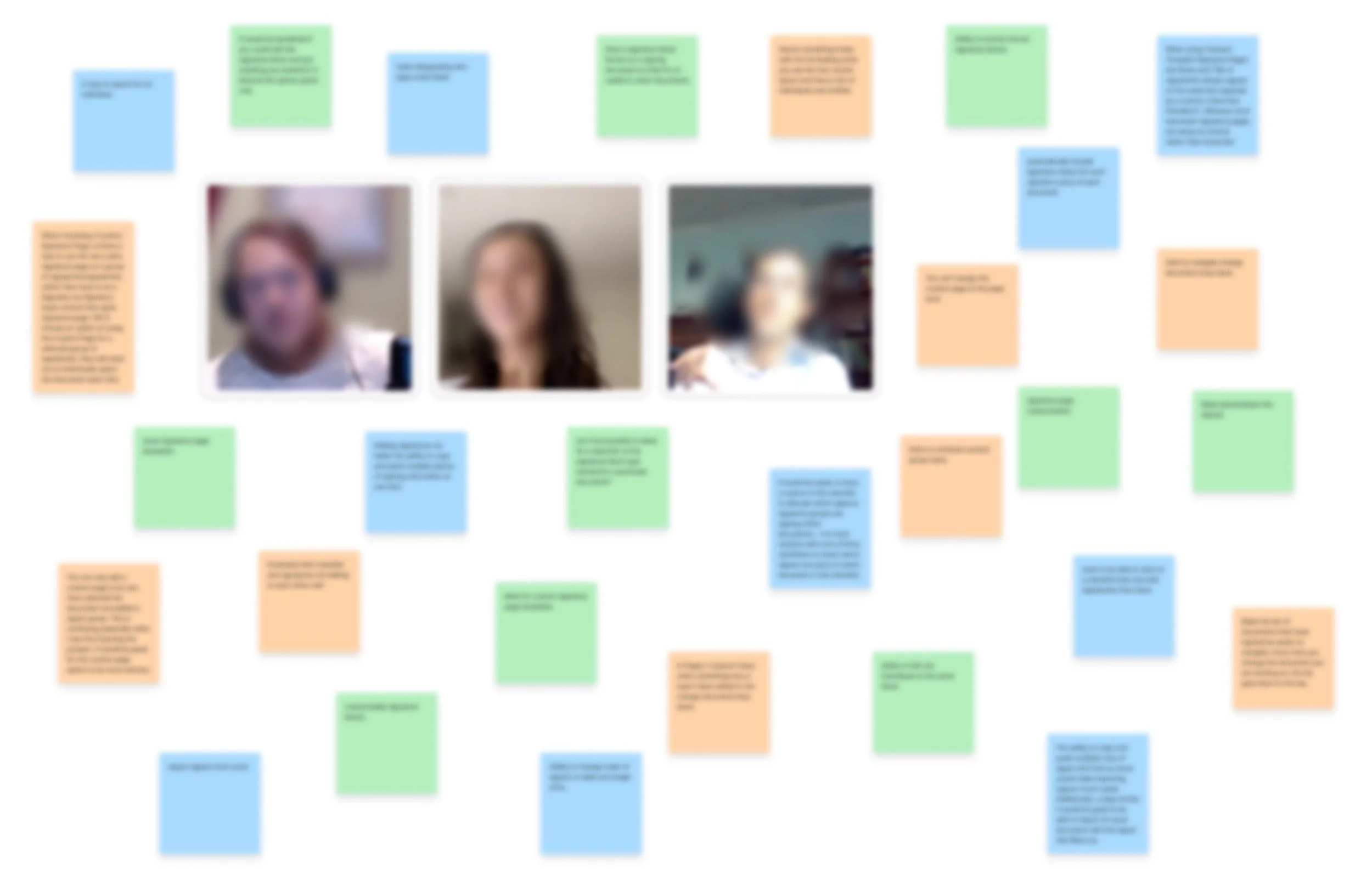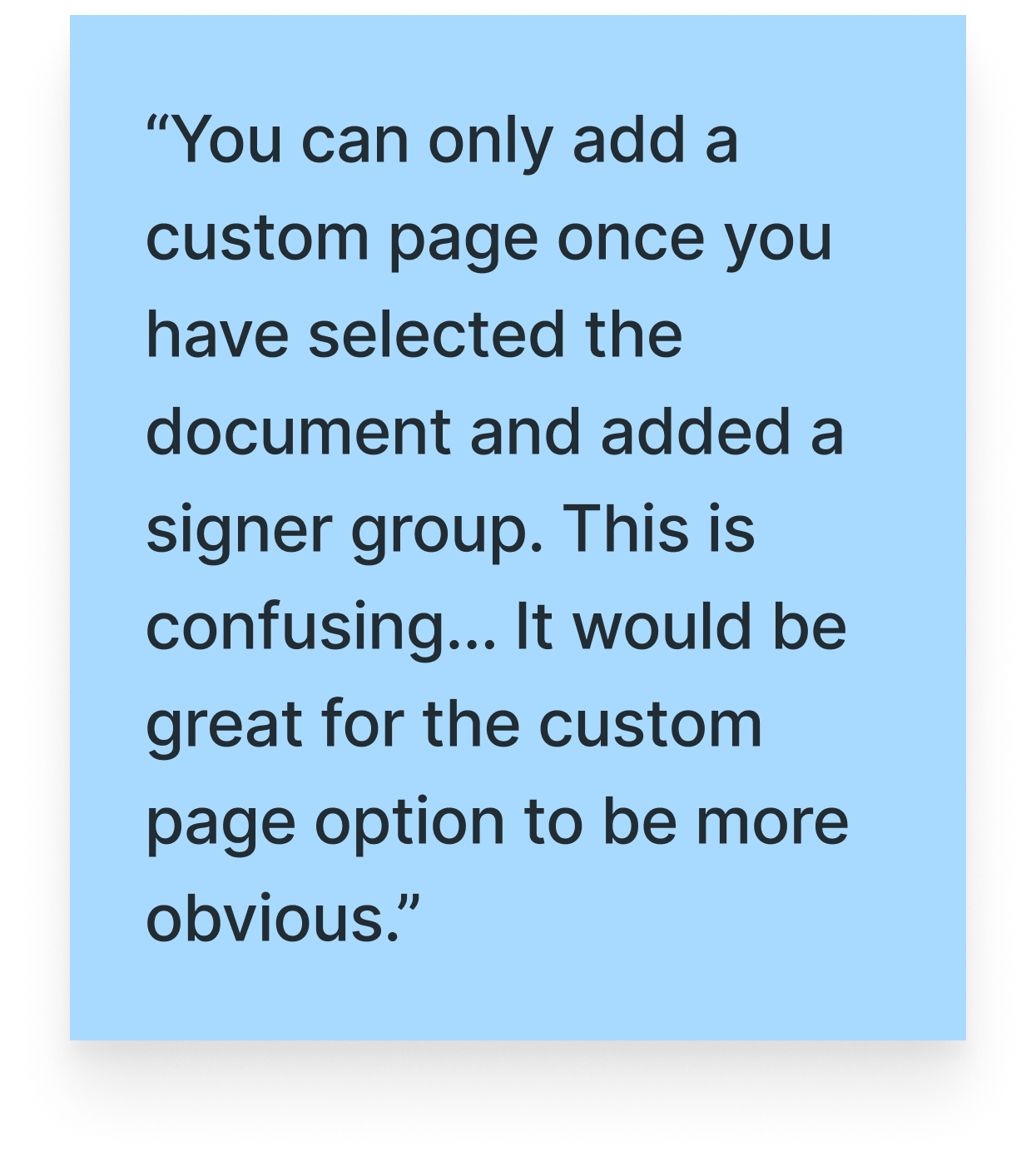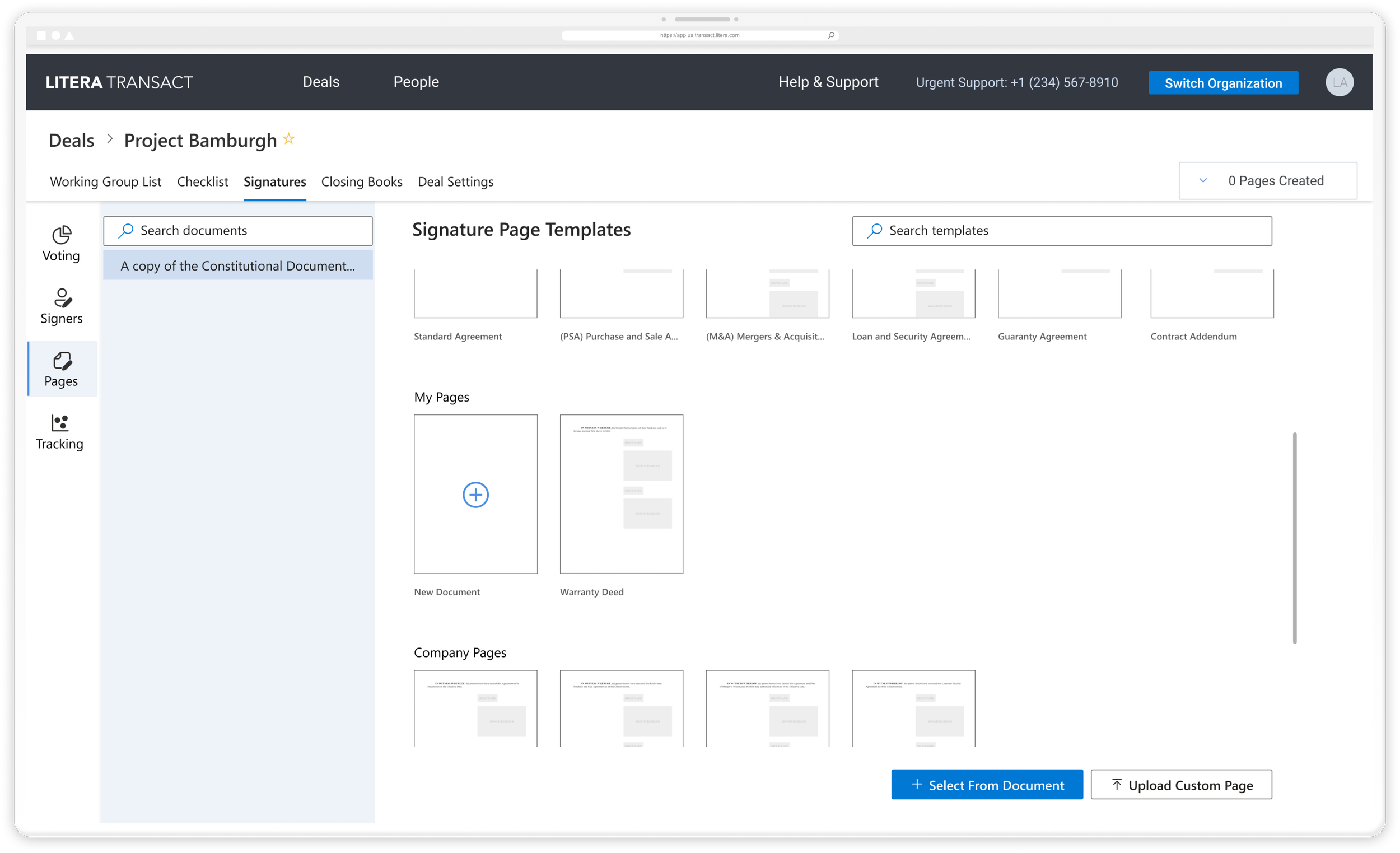Flexible by Design
Templates that adapt to legal workflows — Litera Transact
How do you create scalable design for legal documents that resist standardization?
Role:
I led the redesign from research and early concepts through final handoff. I collaborated closely with my cross-functional teammates (including Project Managers, Customer Success Managers, and Engineering) and presented regularly to our Customer Advisory Board and leadership.
Challenge
We initially believed users wanted faster ways to draft content through predefined templates. But usability testing and product data revealed something else: users needed both structure and complete control.
Our mental model of how a signature page was assembled and the order in which tasks should be completed was misaligned with firm-specific workflows. This disconnect led to inefficiencies, workarounds, and avoidable errors.
Overview
In our Signature Module, users could compile signer data, create signature pages, generate signature packets, and track the signing of those packets.
We offered both the option to upload a custom template (a document the firm already had) as well as the option to build a signature page directly within Transact.
Templates existed for the most common variations and allowed for limited modifications (ex. font, text size, line breaks).
Where Usage Didn't Equal Satisfaction
While time spent in a feature can often indicate engagement, our Heap and NPS data told a different story. Signatures was the most-used module (46% of time spent across the platform), but also the most frequently criticized.
These usability issues weren’t just frustrating users—they were reducing efficiency, increasing errors, and pushing their workflows outside our system. On the business side, this behavior directly impacted deal completion and usage-based revenue.
To measure the success of the redesign, we would focus on two key metrics: average document creation time and user sentiment via NPS, to assess improvements in satisfaction and usability.
Research
Identifying the issues
I recruited 7 participants with help from our Knowledge Experts to conduct current solution walkthroughs. These sessions included both users who had the Signature Module enabled and those who didn’t.
Users were facing significant friction. They were forced into redundant work, and major usability problems caused frequent errors. And while the product had separated out blocks and pages to where you create one before the other, attorneys actually thought of them as one and the same.
Original system model
In Transact the user would fill in data for signature blocks for each signer first, then create or upload a signature page to attach it to
Actual user workflow
Find a signature template on the company document management system (DMS), then add in the signer information as it becomes available
User Insights:
These findings led us to redesign the Signature experience by investigating the merging of Blocks and Pages, redefining data entry, and prioritizing a batch upload feature, all while focusing on reducing redundancy and aligning with user workflows.
The Redesign
The Balancing Act
-
Templates needed to be customizable enough to support diverse legal workflows across firms, while keeping the editing interface intuitive and approachable
-
We needed a system for organizing, searching, and maintaining templates that ensured easy access without cluttering the interface or overwhelming users
-
Determining who could create, edit, and reuse templates raised questions about consistency across a firm, requiring potential updates to our information architecture and permission logic
-
Gathering user input was essential for guiding iteration, but since feedback processes were still new to the organization, I had to be mindful of how much time we asked users to invest
-
The redesign had to ship within a few months while aligning with other active workstreams. One engineering team focused on templates, while others handled related improvements— UK legal updates, spreadsheet-based signatory imports, UI enhancements, and decoupling signatory data from Pages to support duplication and reuse
These guidelines led to changes in the UI, architecture and workflow that would let our users quickly make their pages in an easily reproducible and modifiable format.
A True Signature Page Editor
Instead of rigid templates, we redesigned the entire system around modular, reusable components.
User Stories
As a Paralegal / Legal Assistant
I want to create a reusable template so I can keep duplicating it
I want a template I created to be usable across different deals so I can save time
I don’t want to wait to have signatory information to create these pages
Template Library — a library of customizable templates, allowing users to create their own, modify pre-existing, and save templates
Pre-Filled Dynamic Fields – common data (like names and role) when available auto-populated to save time
Flexible Templates – users could start with a template but easily customize structure and content
Drag-and-Drop Content Blocks – instead of a fixed format, users could add, remove, or rearrange sections
With this approach, we aligned the product with the actual mental model of our users, turning a frustrating process into an intuitive one.
Future Implementation
As the first updates were rolled out at an individual users’ access level, we had plans to expand this functionality at the team and then the firm level to further streamline document creation. We would also add categorization and search to quickly find the most relevant templates.
Impact & Takeaways
Product:
Users completed document creation tasks more efficiently, with fewer steps and less backtracking, averaging a 30% time saved
NPS improvement - users reported feeling more in control of their workflow, with fewer errors and less frustration
Personal:
Got to use the user-feedback loop I built — this was the first time I was able to iterate on designs based on real workflows and see the results immediately
Opened the door for deeper collaboration with users and stakeholders by sharing prototypes, listening deeply, and adapting quickly
By shifting from a rigid system to a user-driven, flexible approach, we turned a frustrating experience into an adaptable workflow—one that actually reflects how legal teams work.






